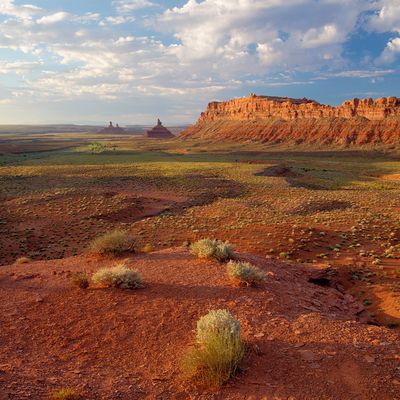
In one of his final acts as president, Barack Obama provided Native Americans with a rare victory over Big Oil. In response to years of lobbying from the Navajo, the Hopi, and three other native tribes, Obama set aside 1.3 million acres of federal land in Utah for the Bears Ears National Monument.
The monument is named for the pair of lofty buttes (the “Bears Ears”) that tower above the pristine landscape where, in the 19th century, the Navajo hid from the encroaching U.S. army. Obama’s decision to wall off the area from development ostensibly ensured that, unlike so many other historic native lands, the 100,000 sites of archaeological significance surrounding Bears Ears — including gravesites and ceremonial grounds — would be preserved in perpetuity.
But the decision also ensured that energy companies — and local government officials with a taste for oil-driven revenues (and/or campaign donations) — would lobby the next Republican president to let them to “drill baby, drill,” right through those ancient Indian burial grounds.
And on Monday, President Trump cleared the way for them to do just that.
“Some people think that the natural resources should be controlled by a small handful of very distant bureaucrats located in Washington,” Trump said in a speech at Utah’s state capitol. “And guess what, they’re wrong.”
The president proceeded to announce that his administration would shrink the Bears Ears monument to just 201,400 acres — and would slash the size of the Grand Staircase-Escalante monument, which was established under president Bill Clinton, by 50 percent (or nearly 1 million acres).
Together, Trump’s action marks the largest reduction in public-lands protection in U.S. history. But the historic importance of the move itself pales in comparison to that of the legal battle that looms in its wake.
Obama established the Bears Ears monument citing authority provided to him by the Antiquities Act of 1906. Trump trimmed it citing the same law. He was not the first to do this — Franklin Roosevelt tightened the borders of the Grand Canyon monument to please western ranchers, while Woodrow Wilson shrank Mount Olympus. But the judiciary has never ruled on the legality of those changes — and opponents of Trump’s decision believe that the president only has the power to unilaterally establish monuments, not to scale them back.
“The general gist of the argument regarding both national monuments is that the Antiquities Act is a limited grant of authority from Congress to the president to establish national monuments,” Steve Bloch, legal director of the Southern Utah Wilderness Alliance, told Politico. “Nowhere in the act does Congress give the president the power to revoke or diminish national monuments, and by doing so the president is acting beyond his authority and unlawfully.”
If that argument prevails in court, Bears Ears will be restored — and, unless Congress takes action, there will be a structural bias toward conservation in U.S. monuments law (presidents will always be able expand the amount of protected territory on a whim, but never contract it without congressional help). If the challengers’ case fails, it could kick off a wave of industrial development on formerly protected lands.
In other news, President Trump is appointing conservative justices to the federal judiciary at a historic pace.






























